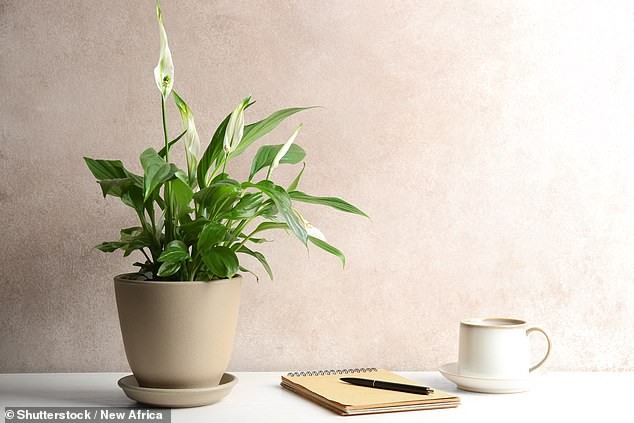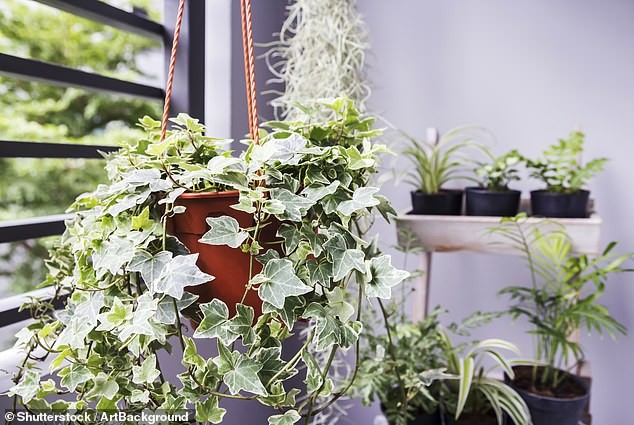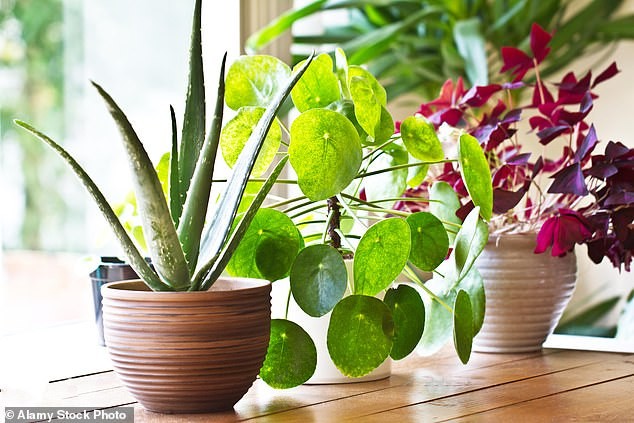Seven house plants that clean the air—and may shield your home from deadly mould
Seven health-boosting house plants can clean the air and help prevent deadly mould from forming on ceilings, walls and windows. Mould thrives in damp, humid conditions; condensation forms quickly when autumn air chills window exteriors, and untreated moisture can become a mould hotspot. Experts say these natural green allies balance humidity and reduce the conditions mould needs to thrive, offering a practical, stylish line of defence in a damp home.

In This Article:
- Why mould forms—and how plants can help (foliar uptake and humidity balance)
- Meet the seven indoor champions: Peace Lily, English Ivy, Sword Fern, Spider Plant and Areca Palm
- Two more mould-fighting champions: Snake Plant and Asplenium nidus 'Crispy Wave'
- Mould danger remains—and what to do about it
Why mould forms—and how plants can help (foliar uptake and humidity balance)
Mould loves damp, humid spaces. As exterior windows turn colder in autumn, condensation can collect on indoor surfaces and fuel mould growth. Chris Bonnett from Gardening Express explains that there are ways to control this and prevent condensation from forming in the first place: if your windows are particularly steamy, you need to lower indoor moisture levels, and plants can help do this. Connor Towning, a plant expert, notes that some plants have the ability to absorb moisture from the air, which reduces humidity and makes mould less likely.

Meet the seven indoor champions: Peace Lily, English Ivy, Sword Fern, Spider Plant and Areca Palm
Peace Lily (spathiphyllum) absorbs moisture through its glossy green leaves, helping to regulate humidity and reduce mould. It also filters toxins like benzene and formaldehyde and can ease mild allergy symptoms, though it is toxic to cats and dogs if eaten and should be kept high up. Price around £15; best in bright but indirect light with watering every 1–2 weeks, in an east-facing room. English Ivy (hedera helix) lowers airborne mould and can help people with mild asthma, but it is toxic to pets and its sap can irritate skin. Pot prices around £8. It prefers a cool, medium-light spot, watering about every 9 days or when the top inch of soil dries. Avoid direct sunlight to prevent leaf scorch. Sword Fern (Boston fern, nephrolepis exaltata) thrives in humid spaces and helps keep mould in check while filtering pollutants like formaldehyde and xylene. Generally safe for people, though pets may have minor digestive upset if they nibble it. The plant likes bright, indirect light and weekly watering when the top 1–2 inches of soil feel dry; around £5. Spider Plant (Chlorophytum comosum) absorbs moisture and filters indoor air, helping reduce mould growth. Non-toxic to cats and dogs, it’s a low-maintenance option at about £7, preferring humid spots like bathrooms or kitchens and weekly watering in the growing season. Areca Palm (Dypsis lutescens) balances indoor humidity and filters toxins, while remaining safe for pets. It thrives in bright, indirect light with regular watering to keep the soil lightly moist; expect to pay around £9, with a warm room helping it flourish.

Two more mould-fighting champions: Snake Plant and Asplenium nidus 'Crispy Wave'
Snake Plant (Sansevieria) grows best in bright light but tolerates low light; it absorbs moisture through its leaves and moves it to the roots. Price ranges from £10–£50. Water every 2–3 weeks in summer and once a month in winter, with a preference for temperatures above 10°C. It’s hardy and dry-loving, so a living room is often ideal rather than a bathroom. Asplenium nidus 'Crispy Wave' has lettuce-like, wavy leaves and is a powerful natural air purifier. It thrives in indirect sunlight and is well suited to bathrooms or shaded corners. Expect to pay £5–£30, with watering 1–2 times a week to keep soil slightly moist without overwatering.

Mould danger remains—and what to do about it
It is estimated that more than six million homes in England could harbour mould. Highly toxic black mould can appear dark green, dark grey, or orange with white flecks and can cause respiratory problems, allergies, asthma, and infections that can be fatal. The case of two-year-old Awaab Ishak, who died from prolonged mould exposure in 2020, underscores the seriousness. Experts say the only real way to get rid of mould is to address the underlying damp, moisture, and ventilation issues and fix leaks. If you rent, your landlord is legally required to identify the source of damp and take action—or face prosecution. Plants can play a supporting role by reducing humidity and improving air quality, but they are not a substitute for fixing a damp home. Bottom line: plants can help balance humidity and cleanse air, while decisive damp-control remains essential for a mould-free home.

